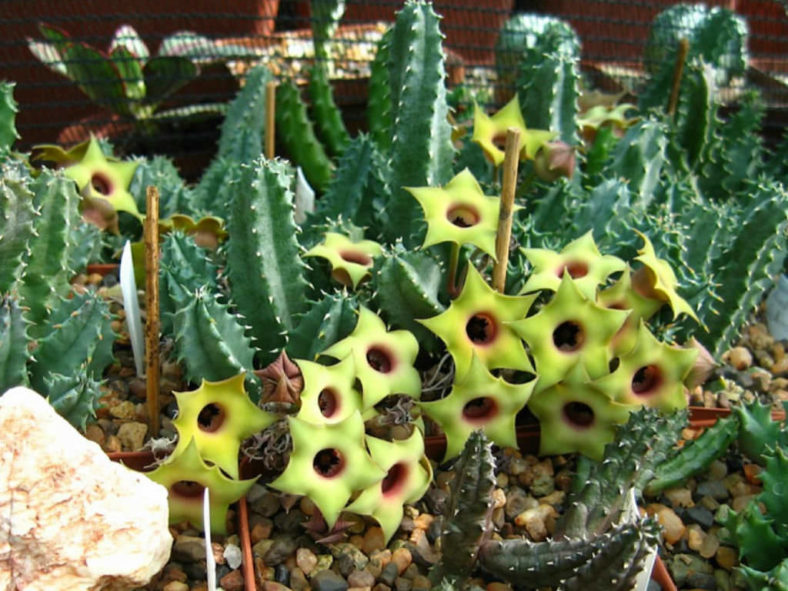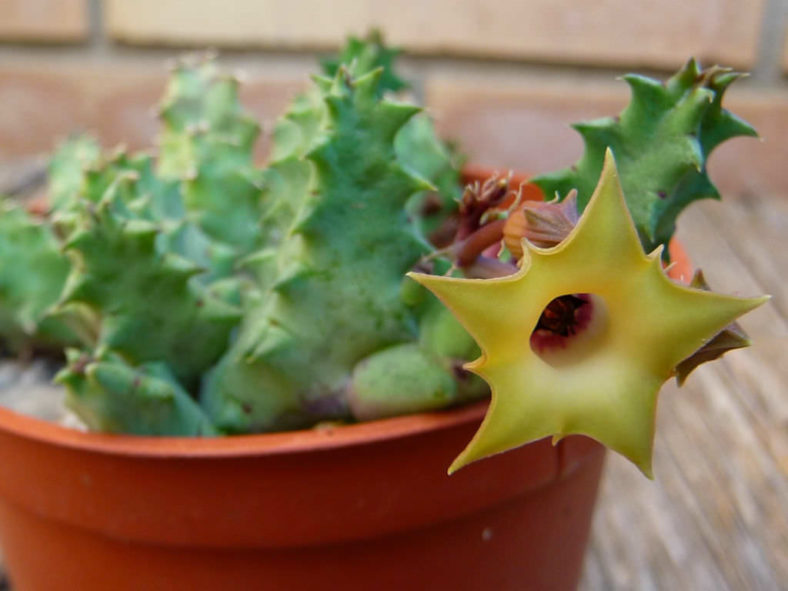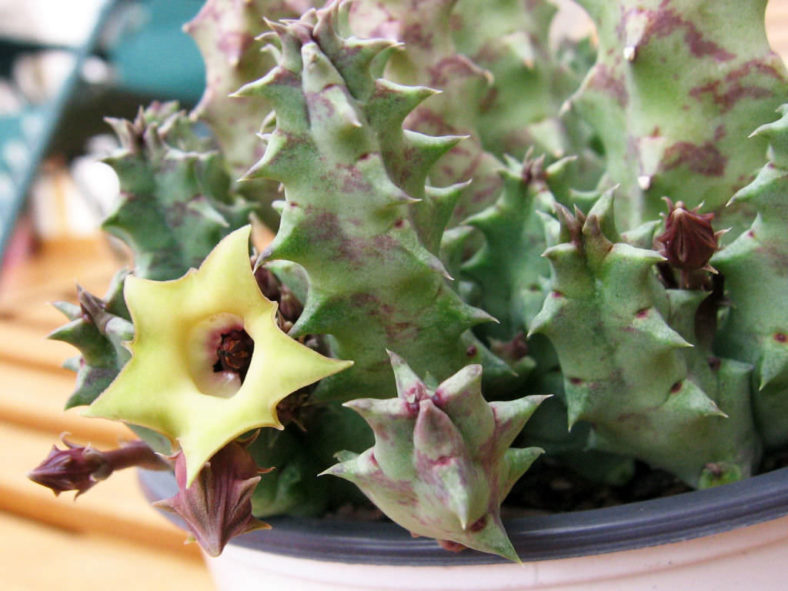Scientific Name
Huernia thuretii var. primulina (N.E.Br.) L.C.Leach
Accepted Scientific Name
Huernia thuretii Cels ex Hérincq
Common Name(s)
Yelow-flower Huernia, Primrose Huernia
Synonym(s)
Huernia primulina, Huernia primulina var. primulina
Scientific Classification
Family: Apocynaceae
Subfamily: Asclepiadoideae
Tribe: Stapeliae
Genus: Huernia
Etymology
The varietal epithet "primulina" (pronounced "prim-yoo-LEE-na") means "resembling Primula". It likely refers to the pale yellow flower color of this variety, which is found in many Primula species.
Origin
Huernia thuretii var. primulina is native to the Eastern Cape province of South Africa. It is not accepted as a variety and is treated as a synonym of Huernia thuretii.
Description
Huernia thuretii var. primulina, also known as Huernia primulina, is a small succulent that forms dense clumps of green, erect, 4– to 5-angled stems with sharp teeth along the edges. Compared to Huernia thuretii var. thuretii, this variety has longer, more creeping stems. The stems, which can reach up to 1 inch (2.5 cm) in thickness (not including the teeth), are mottled with pink and purple in bright sunlight. The teeth have recurving tips and can measure up to 0.2 inches (0.5 cm) in length.
In the fall, Huernia thuretii var. primulina produces pale yellow flowers with red or maroon throats. They appear either solitary or in clusters of up to 4, emerging from the base of the stems..

Hardiness
USDA hardiness zones 10a to 11b: from 30°F (-1.1°C) to 50°F (10°C).
Huernias require a potting mix with excellent drainage. A succulent plant mix of 50 percent pumice or perlite, 25 percent peat or organic mulch, and 25 percent sand helps prevent rotting and overwatering. Roots experience dieback in cool-season dormancy, so plants grow best in shallow containers that allow the soil to dry out quickly. Using clay pots further helps the soil from staying too wet. An underlayment of coarse gravel below the soil mix also improves drainage. A layer of gravel between the plant and the soil mix in climates with damp, cool summers also prevents the stems from staying too moist.
Outdoor plantings do well in raised beds. Huernias prefer bright light or partial shade. In nature, they grow underneath shrubs or other plants. Too much sun causes stems to develop protective reddish or purple pigmentation and can actually scald the stems. Too little light leads to weak, thin growth with decreased flower production. These plants grow best between 50°F and 80°F (10°C and 27°C). Protect them from freezing weather.
Learn more at How to Grow and Care for Huernia.
Links
- Back to genus Huernia
- Succupedia: Browse succulents by Scientific Name, Common Name, Genus, Family, USDA Hardiness Zone, Origin, or cacti by Genus
Photo Gallery
Click on a photo to see a larger version.

